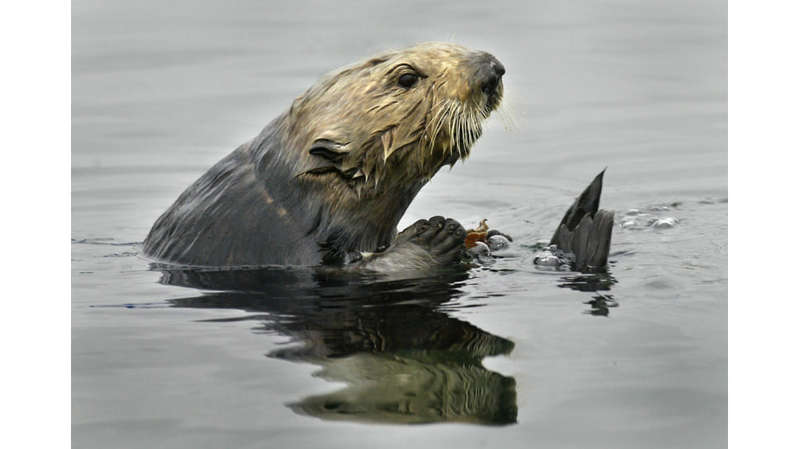
Barbaric attitude towards sea grass increases its diversity
Sea otters – sea otters – are outstanding hunters: they collect shellfish, catch crabs and fish, and break the strongest shells with stones. They are the only non-primates among mammals who know how to use a tool to get food. But when sea otters hunt, they mercilessly destroy plants that have accidentally fallen under their paws and teeth.
After the sea otter catches food for itself, bald spots, holes, and sometimes even whole small deserts remain in the carpet of sea grass. For a long time, scientists dealing with marine life considered sea otters to be villains, although, of course, they did not take any measures, they took care of nature. Sea otters almost died out at one time, and even now the species is not in the best condition: only 80 thousand individuals.
But the latest research has shown that the activity of sea otters in underwater meadows not only does not harm marine vegetation, but even, on the contrary, increases its vitality! Scientists examined the meadows formed by the scum – these are not algae, but sea grass, a flowering plant.
Most flowering plants can reproduce in two ways. On the seabed, asexual, or vegetative, is more common: parts of plants take root next to the parental generation, and gradually the bottom is covered with an increasingly dense and widespread carpet of algae. Another way is sexual: plants form flowers, gametes merge in them, seeds are formed, from which new plants then grow. This path is more promising from the point of view of the prosperity of sea grass: the exchange of hereditary information increases biodiversity and, ultimately, the survival of the plant population.
The researchers analyzed the DNA of 462 plant samples from 15 different meadows in the coastal waters of British Columbia. Sea otters have been grazing on six meadows for the past 30 years; six more sea otters have been missing for more than a century – since the time of their extermination for fur; finally, three more sea otters have been reintroduced in the last ten years.
The results were so overwhelming that the researchers checked the data literally 20 times. It turned out that the biodiversity of underwater meadows, where sea otters freely lived, is one third higher than meadows where there were no sea otters. Scientists say that genetically more diverse populations of seagrass are more resilient to environmental changes, which is exactly what is happening everywhere.
By the way, scientists write that the Seri people living in the Gulf of California were the spontaneous geneticists. From time immemorial, they have mercilessly gathered underwater grass for food, and provided their sea garden with significant biodiversity.
Based on the article “Physical Disturbance by Recovering Sea Otter Populations Increases Eelgrass Genetic Diversity”; Erin Foster, Jane Watson, Matthew A. Lemay, Tim Tinker, James A. Estes, Rebecca Piercey, Lauren Henson, Carol Ritland, Allyson Miscamp, Belllinda Nichol, Margot Hessing-Lewis, Xanne K. Salomon, Chris T. Darimont; Science magazine, October 2021
Leonty Krivov
Read also:
